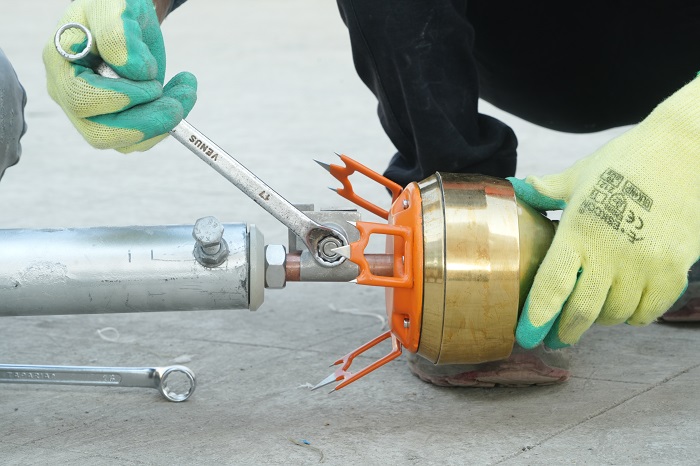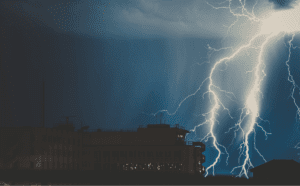What is Lightning Arrester’s Coverage Area?
The coverage area of a Lightning Arrester (or Air Terminal) is the area within which the arrester can effectively protect a structure from lightning strikes. This area is determined by the spacing between air terminals. In this blog, we have explained the Lightning Arrester’s Coverage Area calculation, for Convectional Lightning Arresters and Early Steamer Emission (ESE) Lightning Arresters.
Let’s start by understanding what is a Lightning Arrester, it is the primary part of the Lightning Protection System, that protects the power system by directing the charges from lightning strikes to the ground through a low resistance path. Thus, the charges get grounded saving the electrical systems from any damage caused by lightning. There are mainly two types of Lightning Arresters in use first is the Conventional Lightning Arresters or Franklin Rods and second one is the Early Streamer Emission (ESE) Lightning Arresters.
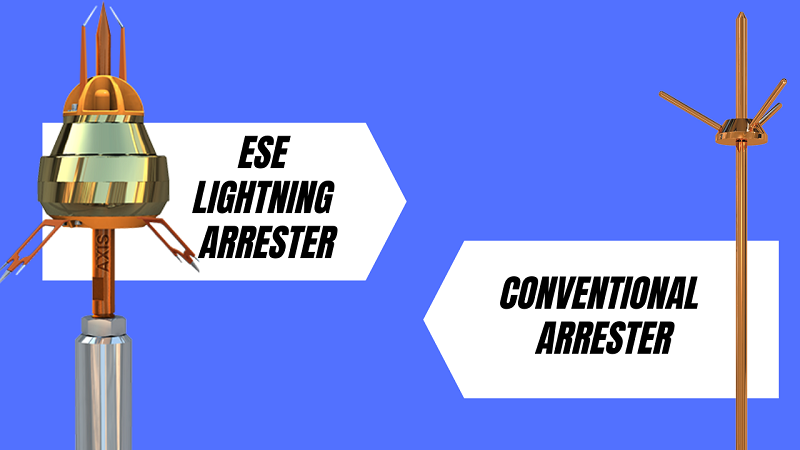
Conventional Lightning Arrester Coverage Area Calculation
The coverage area of the lightning protection system for the required structure or the area to be protected can be calculated as per the method described in standard IEC 62305-3.
There are three methods as per standard IEC 62305-3 for designing the external Lightning protection system from which the coverage area will be calculated:
A) Rolling Sphere Method
As per this method, the imaginary sphere rolls over the structure, this exercise can be done with the help of suitable software. In this case, the coverage area will be the portion below the two different edges of the imaginary sphere which gets contacted with the structure to be protected. After rolling the imaginary sphere on the whole structure the effective coverage area is determined.
Watch our video to understand this method in detail
The radius of the rolling sphere is considered based on the level of protection. As per standard the radius of the rolling sphere for the respective level of protection is given below
- Level 1: 20 meters
- Level 2: 30 meters
- Level 3: 45 meters
- Level 4: 60 meters
B) Protection Angle Method
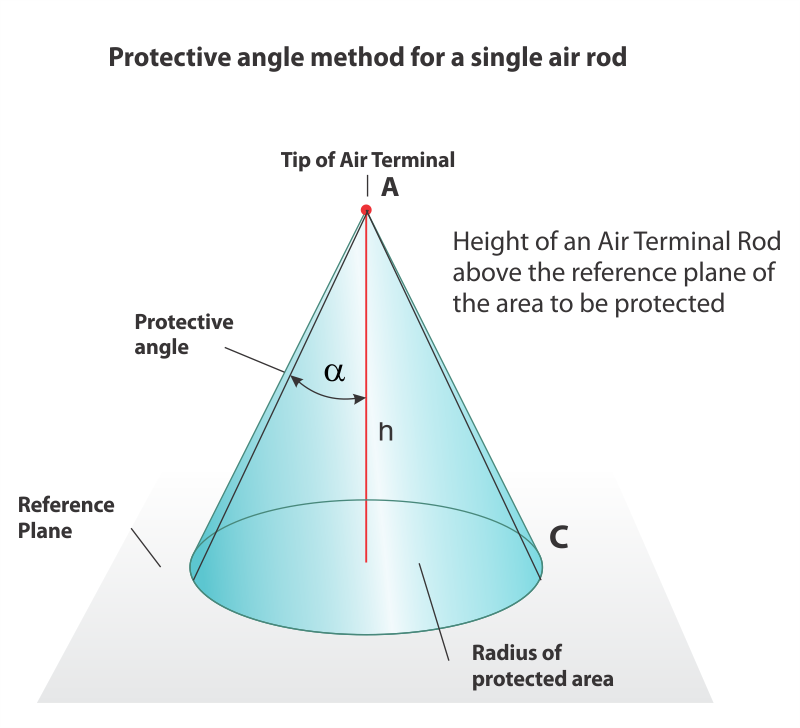
In this method length of the air termination rod and its position shall be considered in such a way that the conical volume formed due to the vertical air termination rod and the angle defined in the standard shall protect the structure which needs to be protected. In this case, the coverage area will be the area that comes under the conical volume within this defined angle.
C) Mesh System
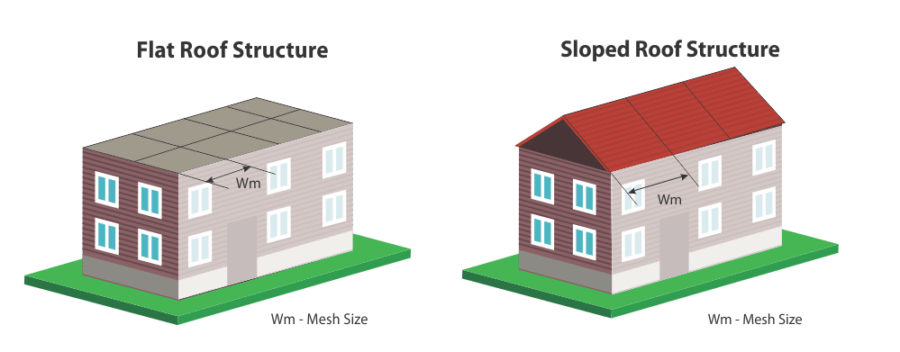
In this method, a suitable conductor is used to protect the whole structure by forming the mesh over the structure. The size of the mesh is depending on the level of protection and it is as mentioned in the standard. The coverage area in this case will be the area of the structure which comes under this mesh formed by the conductor over the structure.
Defined values of the relevant parameters
The formula for calculating the distance between two Conventional Lightning Arresters(d) According to Rolling Sphere Method
d = 2 * √(2rh – h²)
Where:
- d is the distance between two air terminals,
- r is the rolling sphere radius as per the applied Level,
- h is the air termination height over the horizontal plane.
This formula calculates the maximum distance that can exist between two air terminals to ensure effective lightning protection. It takes into account the radius of the rolling sphere (which varies depending on the level of protection required) and the height of the air terminal above the horizontal plane.
Here’s an example for better understanding. Let’s say for a Level IV protection system, the given values are:
- Rolling sphere radius (r): 60 m
- Height of air terminal (h): 0.5 m
Substituting these values into the formula, we get:
d = 2 * √(2600.5 – (0.5)²) = 15.46 m
This means that for a Level IV protection system, the maximum distance between two air terminals should not exceed 15.46 meters to ensure effective lightning protection.
Talk to our engineers!
ESE Lightning Arrester Coverage Area Calculation
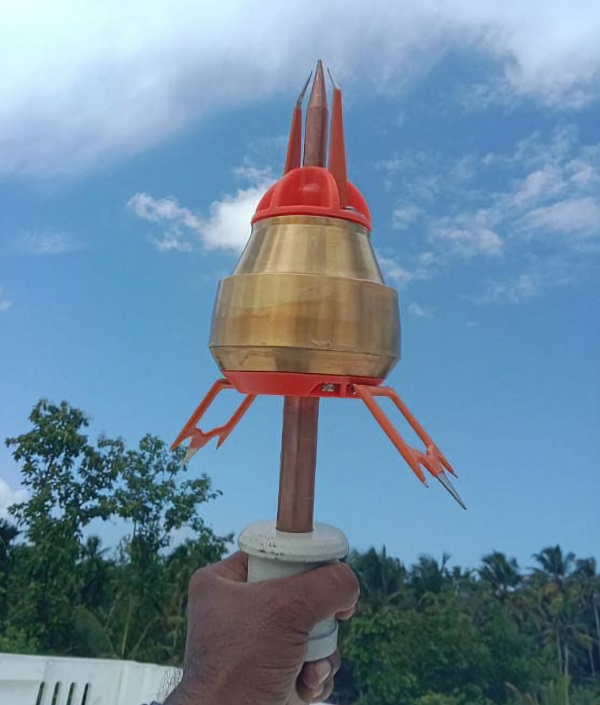
ESE Lightning Protection Systems is a relatively new approach to the problem of lightning hazards, according to (NFC 17-102, UNE 21186) standards, it is the most effective protection against lightning.
The coverage area of the lightning protection system for the required structure (or the area to be protected) can be calculated as standard NFC 17 102-2011.
Here, the coverage area is the area that comes under the umbrella-shaped semicircle. This semicircle is formed by considering the radius of protection, which is calculated based on the parameters specified for ESE. The height of the ESE arrester, installed relative to the surface and above the structure to be protected, also plays a crucial role in this calculation.

The position of the ESE shall be considered so it can protect the required structure including the area besides the structure. The ESE should preferably be installed on the highest part of the structure. It shall be the highest point within the area to be protected. An ESE arrester is characterized by its efficiency ΔT which is proved in the evaluation test as per standard NFC 17 102-2011. The maximum value for ΔT can be 60 µs.
A Video Tutorial to help you calculate the coverage area:
The calculation for the radius of protection
The protection radius of an ESE is related to its height (h) relative to the surface to be protected, to its efficiency and to the selected protection level, it is calculated with the below formula:

Where,
- Rp (h) (m) is the protection radius at a given height h
- h (m) is the height of the ESEAT tip over the horizontal plane through the furthest point of the object to be protected
- r (m) is 20 m for protection level I | 30m for protection level II | 45m for protection level III | 60m for protection level IV
- ∆ (m) ∆ = ∆T x 106 Field experience has proved that ∆ is equal to the efficiency obtained during the ESEAT evaluation tests
The calculated radius of protection for Axis ESE Arresters
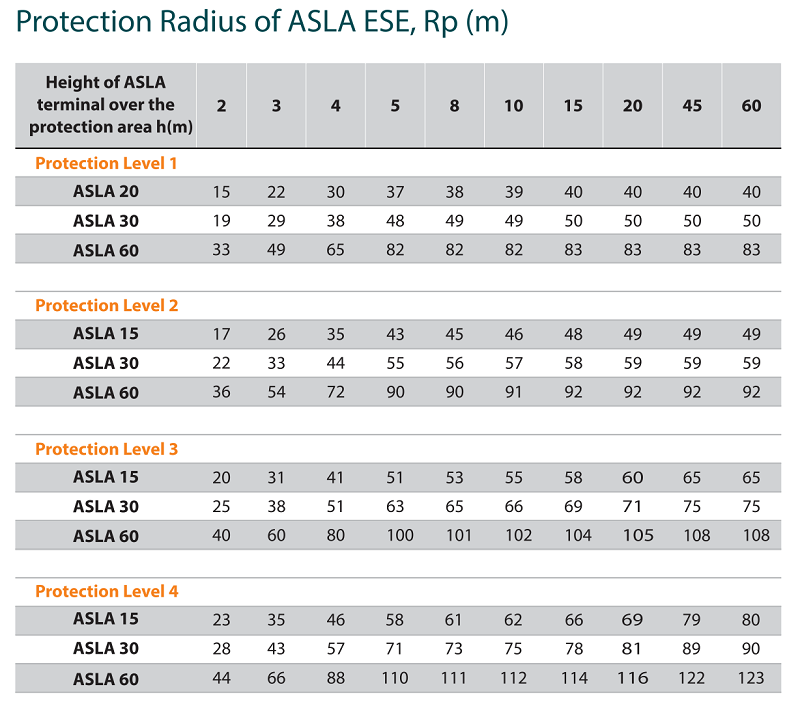
Conclusion
In conclusion, the calculation of the coverage area of Lightning Arresters is a critical aspect of designing an effective lightning protection system. It ensures that the entire structure is within the protective zone of an Air Terminal, thereby significantly reducing the risk of damage from lightning strikes.
This calculation, based on factors like the rolling sphere radius and the height of the Air Terminal, helps in the optimal placement of Air Terminals. It strikes a balance between cost-efficiency and comprehensive protection, making it an indispensable step in the implementation of lightning protection measures. Therefore, understanding and correctly determining this coverage area is crucial for the safety and longevity of any structure.

